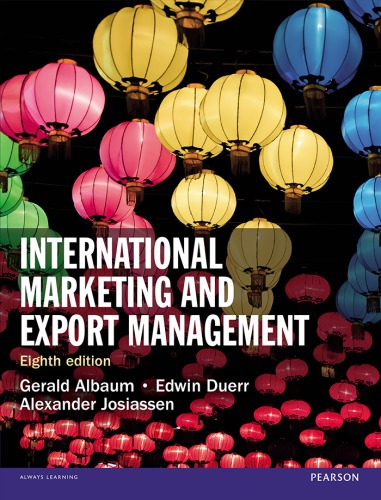

Most ebook files are in PDF format, so you can easily read them using various software such as Foxit Reader or directly on the Google Chrome browser.
Some ebook files are released by publishers in other formats such as .awz, .mobi, .epub, .fb2, etc. You may need to install specific software to read these formats on mobile/PC, such as Calibre.
Please read the tutorial at this link: https://ebookbell.com/faq
We offer FREE conversion to the popular formats you request; however, this may take some time. Therefore, right after payment, please email us, and we will try to provide the service as quickly as possible.
For some exceptional file formats or broken links (if any), please refrain from opening any disputes. Instead, email us first, and we will try to assist within a maximum of 6 hours.
EbookBell Team

4.0
56 reviews
ISBN 13: 9781292016924
Author: Gerald Albaum, Edwin Duerr, Alexander Josiassen
International Marketing and Export Management 8e offers an accessible state-of-the-art text in international marketing. The book covers the evolving internationally competitive landscape that almost all firms and consumers find themselves acting in today. Consumers because they often make consumption choices where there are international options, and firms because they either compete internationally or have international competitors in their domestic market.
The eighth edition retains its clear and comprehensive coverage of the opportunities for companies of all sizes and in all industries in the export of goods, services, intellectual property and business models.
Written in a no-nonsense style, the book has been updated to offer the most up-to-date discussion of the literature in the area.
international marketing and export management pdf
international marketing and export management 8th edition pdf
international marketing and export management 7e book
international marketing and export management gerald albaum pdf
international marketing and export management 8th edition
Tags: Gerald Albaum, Edwin Duerr, Alexander Josiassen, marketing, management